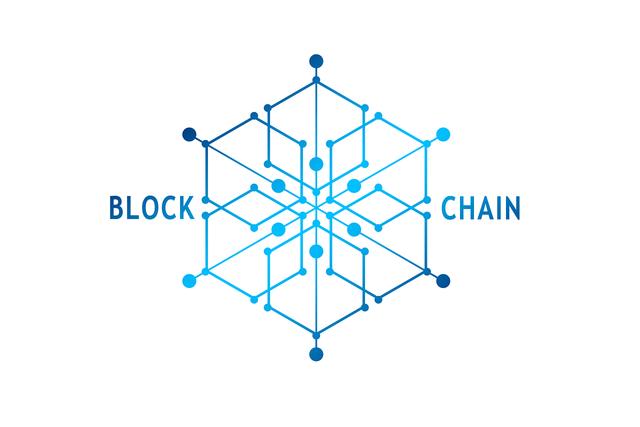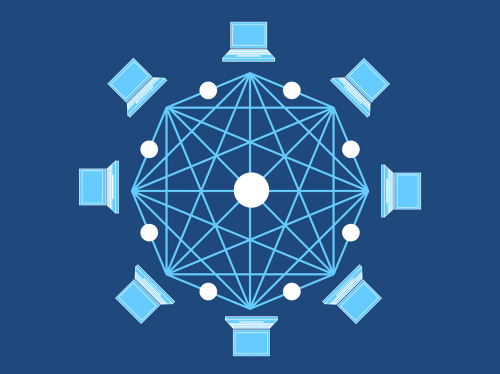Thanks to the management team of Seemit Crypto Academy for inviting all Steemians to participate in Sec 14 Week 4 Engagement Challenge on the topic Sidechains. I also take this opportunity to share my post in the community I admire. Ihv made an attempt to cover the topic as much as information and knowledge I could gathered from the platform and internet.
A blockchain is a immutable, distributed, and decentralized ledger at its core that consists of a chain of blocks and each block contains a set of data.
Understanding the fundamental pillars of blockchain technology, which include
- security
- decentralization and
- scalability.
Primarily, blockchain is composed of 5 layers:
- the hardware infrastructure layer,
- the data layer,
- the network layer,
- the consensus layer, and
- the application layer.
Every layer has a distinct function.
Different use cases require different types of blockchain. There are four main types of blockchain networks: private blockchains, public blockchains, consortium blockchains and hybrid blockchains. Each one of these platforms has its drawbacks, benefits and ideal uses.
A sidechain can be public or private, and each sidechain has its own security, protocol, consensus mechanism, and token.
A side chain is just a blockchain connected to another major blockchain. These chains each have their own set of functions, rules, and goals. Even though they are independent, they form a whole ecosystem when combined.
A sidechain is a independent, separate blockchain linked to the main blockchain (mainchain) using a two-way bridge. It enables digital assets or tokens to be transferred between the sidechain and the mainchain.
Sidechains can be used to run blockchain applications like decentralised apps (dapps), helping to scale the blockchain and taking some computational load off the mainchain.
Sidechains allows tokens from one blockchain to be securely used within a completely separate Blockchain. This mechanism is used to improve the privacy, scalability, and functionality of the main Blockchain network.
Sidechain bridges: Sidechain bridges allow the transfer of information or assets between a main blockchain network and a sidechain. A sidechain is a separate blockchain that is pegged to the main blockchain and can be used to perform specific experiments or functions without affecting the main blockchain.
What are the differences between Side Chain and Layer 2? The variations in security techniques between sidechain and layer 2 solutions are the most significant. Side chains have their own security features, however Layer 2 relies on the main chain's security in most cases.
Sidechains are independent blockchains that connect to their parent blockchains via a two-way bridge. The transfer of assets between the two via this bridge. These sidechains have some authority, as they operate using their own consensus mechanism.
What is a sidechain? A sidechain is a different blockchain network that connects to another blockchain – called a root blockchain or mainnet – via a two-way peg.
Benefits. Sidechains come with a number of benefits, including: Scalability: by processing a subset of transactions independently, Sidechains aim to address the scalability issues of the main blockchains . This allows for increased throughput and faster transaction times.
Benefits of Sidechains
By offloading some of the transaction processing and data storage to a parallel network, separate, sidechains can help reduce traffic on the mainchain, resulting in faster transaction processing and reduced transaction fees.
An Example: Bitcoin's sidechains
Real-life examples of sidechains are RootStock (RSK) and Bitcoin's Liquid Network. Since both sidechains are tied to Bitcoin's mainnet, only activities involving bitcoin are possible. The Liquid Network built on top of Bitcoin's mainnet is an open-source sidechain created by Blockstream.
Thank you for reading my post



Thank you, @impersonal for publishing an article in the Steemit Crypto Academy community today. Steemit has zero tolerance for all forms of plagiarism and in the Academy here, we don't joke with it either. Unfortunately, you have directly taken some parts of your articles from the internet and presented them as yours. Let's see some examples below:
Original Sources:
https://crypto.com/university/what-are-sidechains-scaling-blockchain
https://www.kaleido.io/blockchain-blog/what-is-bridging
https://glair.ai/post/the-difference-between-layer-1-layer-2-and-sidechain-in-the-blockchain
In essence, you have taken the above from the Internet and that amounts to plagiarism.
Remarks
Plagiarized Content.
Total| 0/10
Cc:-
@pelon53
@steemcurator01
Downvoting a post can decrease pending rewards and make it less visible. Common reasons:
Submit
Great job done my dear friend @kouba01.
My community even tagged this user spammer, and muted the user.
The strategy of this user is whenever he is caught for something unethical act, immediately he unsubscribes the community so that others can't see his actions.
He did the same with our community;
Like he did with the Crypto Academy community!
Each community should be aware of these kinds of activities before waste support.
Downvoting a post can decrease pending rewards and make it less visible. Common reasons:
Submit
Hello! Your comprehensive exploration of sidechains in your Post is both informative and well structured. I appreciate how you have delved into the fundamental pillars of blockchain technology and provided Clear understanding of the layers involved. The breakdown of the types of blockchain networks and the distinctions between side chains and Layer 2 solutions add depth to your explanation.
The inclusion of real life examples like RootStock (RSK) and Bitcoins Liquid Network makes the concept more tangible for readers. Your mention of the benefits of sidechains particularly in addressing scalability issues & reducing transaction fees is a valuable insight.
Your post showcases a strong grasp of the topic and I can see the effort you've put into gathering information from both the platform and the internet. Best of luck
Downvoting a post can decrease pending rewards and make it less visible. Common reasons:
Submit
Hello friend greetings to you. Hope you are enjoying your life there.
The Blockchain system has been beautifully explained by you. Thanks for that. Now about sidechain you believe that it's a chain that is a independent, separate blockchain linked to the main blockchain (mainchain) using a two-way bridge. This point looks valid, I agree to it. We call the main Blockchain the parent chain of the sidechain.
You have mentioned some uses of the sidechain. Sidechains can be used to run blockchain applications like decentralised apps (dapps), Sidechain allow the tokens to be lunched on it. These are some valid uses of sidechain.
you have beautifully explained the difference between these two chains also. Sidechain uses the security of the parent chain, while main Blockchain doesn't need others security. Sidechain are dependent, while main Blockchains are independent.
I wish you very best of luck here in the contest.
Downvoting a post can decrease pending rewards and make it less visible. Common reasons:
Submit
Greetings friend,
Your post about sidechains was informative and well-structured. I liked how you explained the different layers of blockchain technology and how sidechains fit into that.
I also appreciated the examples you gave, like RootStock (RSK) and Bitcoins Liquid Network. It made it easier for me to understand how sidechains work in real life. And the fact that sidechains can help with scalability and reducing transaction fees? Mind blown!
All the best, mate
Downvoting a post can decrease pending rewards and make it less visible. Common reasons:
Submit
X link
https://t.co/6DAqhibzVx
Downvoting a post can decrease pending rewards and make it less visible. Common reasons:
Submit
Why plagarism when it you work harder you can do better than this please, stop that terrible act
Downvoting a post can decrease pending rewards and make it less visible. Common reasons:
Submit